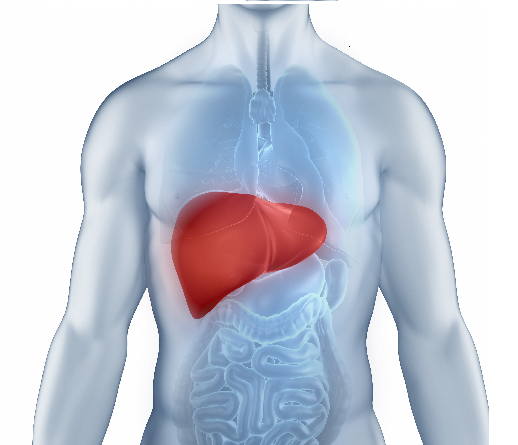5 Ways To Increase Vitamin D Levels
 Vitamin D has the unique ability to be synthesised by the human body when the skin is exposed to sunlight. This nutrient has a critical role in maintaining overall health and well-being.
Vitamin D has the unique ability to be synthesised by the human body when the skin is exposed to sunlight. This nutrient has a critical role in maintaining overall health and well-being.
It is a crucial partner to calcium, ensuring the body can absorb and utilise it effectively. Without adequate vitamin D, the body struggles to absorb calcium efficiently from the diet, leading to weaker bones.
Understanding how to overcome vitamin D deficiency is crucial, as it can result in conditions like osteoporosis, in which the bones become brittle and more prone to fractures.
What is Vitamin D?
Vitamin D is both a nutrient obtained through diet and a hormone the body produces. This fat-soluble vitamin helps absorb and retain essential minerals like calcium and phosphorus, which are critical for building and maintaining strong bones.
Vitamin D is necessary for different bodily functions like:
- Bone Health: One of vitamin D’s most prominent roles is its contribution to bone health. It assists the body in absorbing calcium, which is essential for strong bones and teeth. Without enough vitamin D, the bones can become brittle and prone to fractures.
- Immune Support: Vitamin D also has an important role in the functioning of the immune system. It helps modulate the immune response, which increases its effectiveness in defending against infections and diseases.
What are the Causes of Vitamin D Deficiency?
Here are some causes of vitamin D deficiency:
- Inadequate sunlight exposure due to geographical location, sunscreen use, or cultural practices.
- Limited intake of vitamin D-rich foods.
- Medical conditions affecting nutrient absorption, such as celiac disease or Crohn’s disease.
- Obesity can decrease the bioavailability of vitamin D.
- Aging, which can reduce the skin’s ability to produce vitamin D.
- Certain medications that interfere with vitamin D metabolism.
What are Vitamin D Deficiency Symptoms?
Here are the common signs and symptoms of Vitamin D deficiency:
- Fatigue
- Bone and muscle pain
- Frequent illnesses and infections
- Mood changes
- Hair loss
- Slow wound healing
- Back pain
- Bone deformities (in children)
- Frequent infections (in children)
- Difficulty in sleeping
What are the Best Ways to Get Vitamin D?
Vitamin D deficiency can be combated through multiple Vitamin D sources like Vitamin D-rich foods and supplements. Here are some of the best ways to increase Vitamin D levels:
-
Increasing Vitamin D through Sunlight Exposure
One of the most natural ways to boost vitamin D levels is exposure to direct sunlight. Exposing the skin to UVB rays from the sun triggers the production of vitamin D. Aim for about 10-30 minutes of sunlight on the face, arms, and legs in the morning. However, be mindful of safe sun exposure guidelines to lower the chances of sunburn and skin damage.
-
Vitamin D Foods
Including Vitamin D-rich foods in the diet can significantly increase vitamin D levels. Fatty fish like salmon, mackerel, tuna, and sardines are excellent natural sources of vitamin D. Additionally, egg yolks contain vitamin D, making them a valuable dietary inclusion. For vegetarians, foods like dairy products (milk, yoghurt, and cheese), orange juice, and breakfast cereals can be good sources of this essential nutrient.
-
Supplements and Medical Guidance
Consulting a healthcare provider is essential in case of limited sun exposure, a known vitamin D deficiency, or specific health conditions. They can recommend the best vitamin D supplements based on specific needs and health status. Over-the-counter vitamin D supplements are available in various forms, including D2 and D3. Consulting a doctor is important to understand the proper dosage required to maintain optimal vitamin D levels.
-
UV Lamps (Under Medical Supervision)
In rare cases, UV lamps or UVB lamps can be considered a method to assist the body in producing vitamin D. This approach is reserved for individuals with specific medical conditions that hinder normal vitamin D absorption. It should only be used under medical supervision to ensure safety and effectiveness.
-
Regular Monitoring and Lifestyle Factors
To increase vitamin D levels, consider regular monitoring through vitamin D tests. They can help track the progress and adjust the approach as needed. Typical nutritionally balanced food and physical activity can improve well-being and support vitamin D metabolism.
How much is the Recommended Amount of Vitamin D?
Here is a breakdown of the recommended amount of vitamin D required by the body:
- Vitamin D Recommendations
The Recommended Dietary Allowance (RDA) for vitamin D is a vital guideline for maintaining good bone health and regulating calcium metabolism. For adults 19 years or older, the recommended daily intake is 600 IU (15 mcg) of vitamin D. However, it is important to note that as individuals age, their vitamin D needs change. For adults over 70, the recommended RDA is 800 IU (20 mcg) daily. Additionally, a Tolerable Upper Intake Level (UL) is set at 4,000 IU (100 mcg) per day for adults and children aged 9 and above.
- Vitamin D Recommendations (IOM)
In recognition of the evolving scientific understanding of vitamin D’s role in health, the Institute of Medicine (IOM) made significant adjustments to vitamin D recommendations in 2010. The IOM increased children’s recommended daily vitamin D intake to 600 IU. Simultaneously, the upper limit (UL) for vitamin D intake was raised from 2,000 to 4,000 IU daily.
Addressing Vitamin D deficiency requires a multi-faceted approach, including sunlight exposure, dietary choices, and, when necessary, supplementation under medical guidance.












